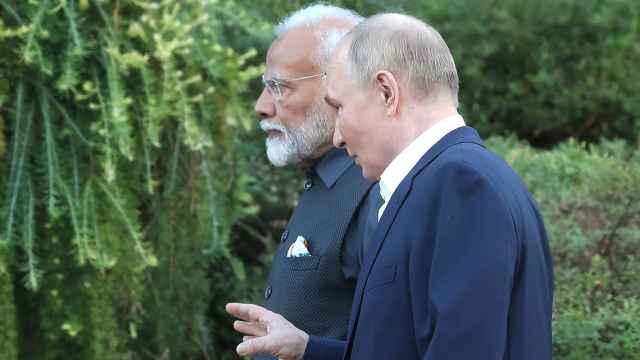China's growth has slowed considerably since 2010 and it may slow even more — a prospect that is rattling investors and markets well beyond China's borders. With many of the global economy's traditional growth engines like the U.S. stuck in low gear, China's performance has become increasingly important.
But now, growth rates for Chinese exports and related indices in manufacturing have fallen, largely owing to weak external demand, especially in Europe. Chinese authorities are now scaling back the other major driver of their country's growth, public-sector investment, as low-return projects seem to generate aggregate demand but prove unsustainable fairly quickly.
The government is using a variety of instruments, including financial-sector credit discipline, to rein in investment demand. Essentially, the government guarantee associated with financing public-sector investment is being withdrawn — as it should be.
But to circumvent the restrictions in the state-dominated financial system, a shadow banking system has developed. This raises new risks: economic distortions; reliance on excess leverage to drive growth in the consumer, real estate, corporate and government sectors; and dangers associated with inadequate regulation. As a result, investors are worried that China could slip into the excess-leverage growth model that has served many developed economies so poorly.
Much has been made of domestic consumption as a driver of Chinese growth in the future. But Justin Lin, a former chief economist at the World Bank, has argued forcefully that investment will and should remain a key growth driver and that domestic consumption in China's growth pattern should not be pushed beyond its natural limits into a high-leverage model based on rising consumer debt.
That seems right. The risk is that Lin's warning will be interpreted as an argument for sticking with an investment-led model, which would imply more low-return public-sector projects and excess capacity in selected industries. The right target for generating growth is domestic aggregate demand based on the right mix of consumption and high-return investment.
Analysts and investors have at least two related concerns. One is that, facing declining growth, policymakers will resort to excess investment or leverage (or both), creating instability. The other is that they will resort to neither, and that no alternative growth engines will be started, leading to an extended slowdown with unpredictable political consequences at home and serious economic consequences abroad.
In short, many investors are nervous because China's future growth story is unclear. It is certainly less clear than the previous story, which cannot be retold.
There is no real way to allay these concerns quickly. Only time, implementation of the policy and systemic reforms to be revealed this fall and actual economic performance will settle the matter one way or the other.
The shift in the growth pattern, if successful, will occur over several years. What one should be looking for is movement in the right directions, which are fairly clear.
One is a shift in comparative advantage. Rising incomes require rising productivity. That means increasing capital and human capital intensity across both the tradable and non-tradable sectors of the economy.
On the tradable side, one should look for structural change and a shift in output to higher-value-added components of global supply chains. Here, innovation and the conditions that support it — including competition and free entry and exit from the market — play an important role. If policymakers choose a model based on a large state-dominated sector protected from internal and external competition, innovation objectives are unlikely to be met, adversely affecting future growth.
Meanwhile, the non-tradable side should grow. As China becomes richer, its middle-class citizens will not just buy more tradable goods like cars, electronics and appliances. They will buy housing and non-tradable services, too. An efficient supply-side response to this growing source of demand requires regulatory reform in many services, including finance, product safety, transport and logistics.
But households still control too little income and save at very high rates. The control of income by the overlapping corporate and public sectors makes it easier to push the investment-led growth model to the point of low, or even negative, returns. So the entire fiscal system is a crucial item on China's reform agenda, especially management of public capital.
Fiscal reform will determine many things: the components of domestic income and demand that will drive structural change on the supply side, the allocation of income and expenditure across levels of government and the embedded incentives that this allocation implies. Outside of China, this part of the reform agenda is the least well understood.
Moreover, social services and social security will need to be strengthened to reverse a pattern of rising inequality. More inclusive growth depends on the completion of the urbanization process that underpins the creation of a modern economy; addressing corruption and unequal access to market opportunities; and aggressively mitigating serious environmental problems.
With significant elements of the global economy and external demand facing headwinds, China's acceptance of a growth slowdown while its new growth engines kick in is a good sign. It suggests that policymakers are playing for sustainable growth and have become warier of policies that, if used persistently, amount to a unsustainable growth model.
Watching for progress on these key elements of structural change and reform seems to be the right stance. If markets are confused or pessimistic about China's longer-term agenda, but if the direction of structural change and reform is positive, there may be investment opportunities that were absent in the more exuberant recent past.
Michael Spence, a Nobel laureate in economics, is professor of economics at New York University's Stern School of Business and senior fellow at the Hoover Institution. © Project Syndicate
A Message from The Moscow Times:
Dear readers,
We are facing unprecedented challenges. Russia's Prosecutor General's Office has designated The Moscow Times as an "undesirable" organization, criminalizing our work and putting our staff at risk of prosecution. This follows our earlier unjust labeling as a "foreign agent."
These actions are direct attempts to silence independent journalism in Russia. The authorities claim our work "discredits the decisions of the Russian leadership." We see things differently: we strive to provide accurate, unbiased reporting on Russia.
We, the journalists of The Moscow Times, refuse to be silenced. But to continue our work, we need your help.
Your support, no matter how small, makes a world of difference. If you can, please support us monthly starting from just $2. It's quick to set up, and every contribution makes a significant impact.
By supporting The Moscow Times, you're defending open, independent journalism in the face of repression. Thank you for standing with us.
Remind me later.






